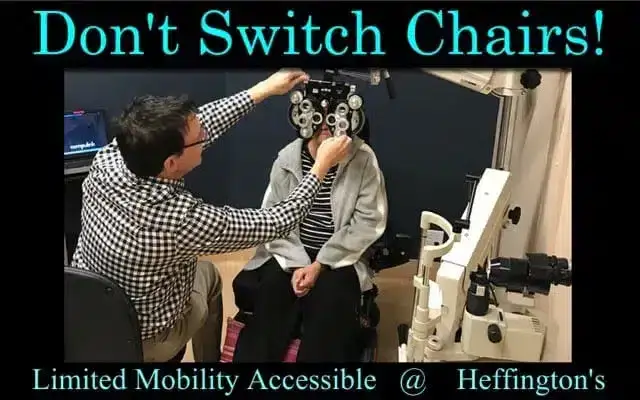Eye Exams
Yearly eye exams are essential.
Our eyes may be one of the most overworked parts of our bodies with all the visual demands of life. Every waking hour, our eyes do a non-stop job, and even in our sleep, they’re still moving.
For children, vision is very important as almost everything they learn in their formative years comes in the form of visual learning. Without proper nutrition and eye care, it’s easy for one’s vision and education to be suppressed and, if not caught at a young age, be life-long limitations.
An eye examination is an important part of one’s routine primary care. Your vision is as important as every other part of your overall wellness. An eye exam is composed of a series of tests that are completed by an Eye Doctor. It’s important for this to happen in person and not over some technology with remote access. We have Real Eye Doctors, Doing Real Eye Exams in person with the latest technology to evaluate your eye health for excellent vision.
Tests that may be included
Eye Exams Tests
- Retinal Examination
- Visual Acuity
- Pupil Function
- Eye focus/Eye teaming
- External examination of the eyes
- Special examinations like Retinal Tomography, Corneal Topography, Electroretinography, etc. may also be needed as advised by your physician
- Intraocular Pressure (IOP)
- Refraction (Objective and/or Subjective)
- Ocular Motility
- Slit-lamp exam
- Color Vision
- Keratometry
according to the American optometric association
Frequency of eye exams for children
| Patient Age | Examination Interval | |
|---|---|---|
| Asymptomatic/Risk Free | At Risk | |
| Birth to 24 Months | At 6 months of age | By 6 months of age or as recommended |
| 2 to 5 years | At 3 years of age | At 3 years of age or as recommended |
| 6 to 18 years | Before first grade and every two years thereafter | Examination Interval |
High-risk children include those who are born prematurely, of low birth weight, were born with low oxygen levels, or those born with intraventricular hemorrhage. Children born to families with a history of eye-related conditions like congenital cataracts or retinoblastoma are also at risk. If a child is also born to a mother with known infection during pregnancy like rubella, herpes, venereal disease, or HIV requires re-evaluation.
Frequency of eye exams for Adult patients
| Patient Age | Examination Interval | |
|---|---|---|
| Asymptomatic/Risk Free | At Risk | |
| 18 to 60 years | Every two years | Every one to two years or as recommended |
| 61 and older | Annually | Annually or as recommended |
At-risk adult patients may include hypertensive, diabetic, or anyone with a history of ocular disease like glaucoma. Other risk factors are occupations, prescription/non-prescription drugs with ocular side-effects, wearing contact lenses, or any prior eye surgery.

For your convenience, all Heffington’s locations welcome patients with limited mobility.
Feel free to remain seated in your chair; you do not need to switch to an exam chair. In addition, to ensure accessibility, our facilities have covered entries, ADA power doors, and four-foot-wide examination room doors.
We rely on our eyes for everything.
Almost all the information that we use for our daily lives is transmitted to our brains through vision. Just close your eyes and imagine living without your vision. It seems complicated, right? So act early and get your annual eye exam today.
